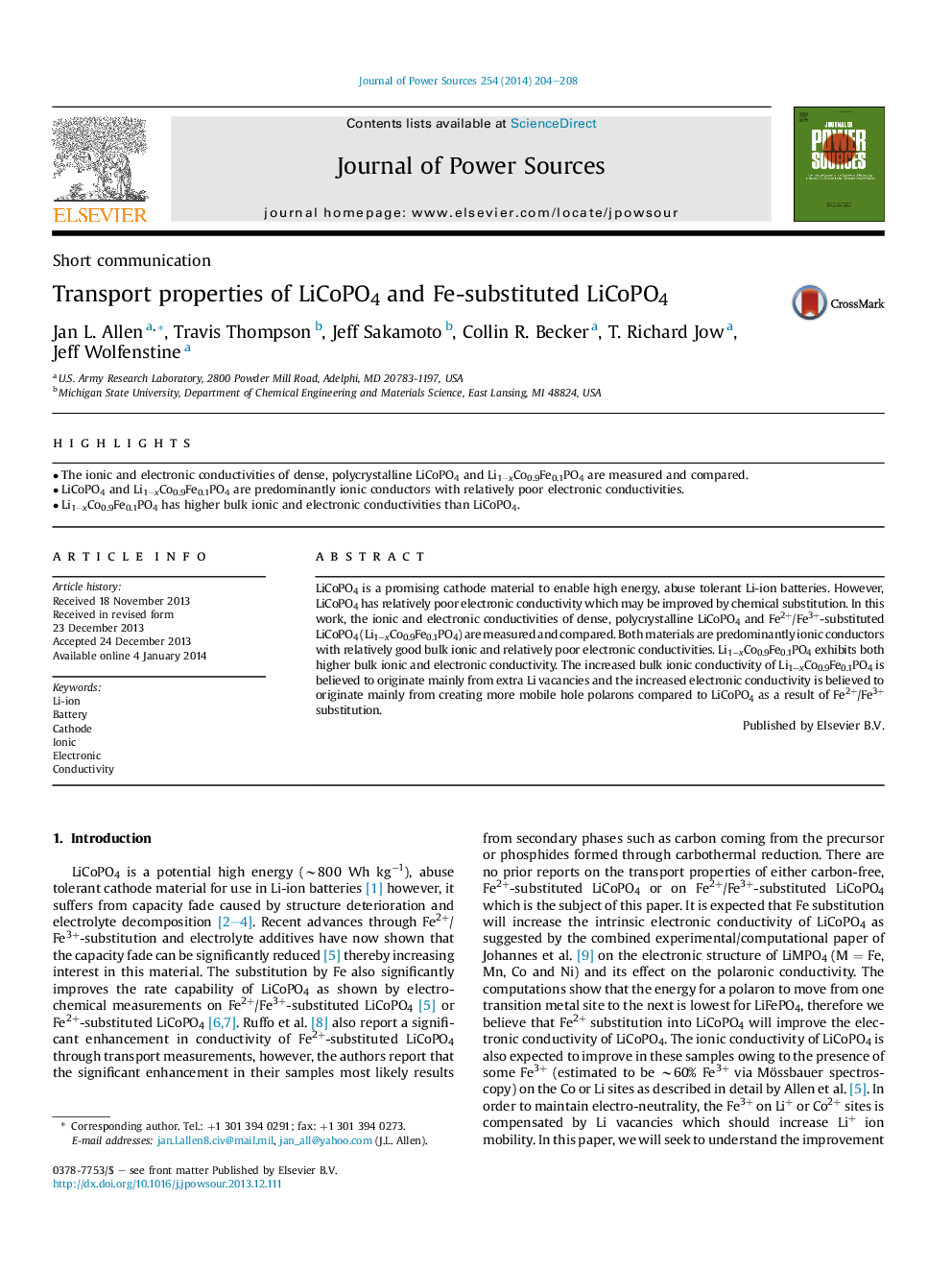| Article ID | Journal | Published Year | Pages | File Type |
|---|---|---|---|---|
| 7737549 | Journal of Power Sources | 2014 | 5 Pages |
Abstract
LiCoPO4 is a promising cathode material to enable high energy, abuse tolerant Li-ion batteries. However, LiCoPO4 has relatively poor electronic conductivity which may be improved by chemical substitution. In this work, the ionic and electronic conductivities of dense, polycrystalline LiCoPO4 and Fe2+/Fe3+-substituted LiCoPO4 (Li1âxCo0.9Fe0.1PO4) are measured and compared. Both materials are predominantly ionic conductors with relatively good bulk ionic and relatively poor electronic conductivities. Li1âxCo0.9Fe0.1PO4 exhibits both higher bulk ionic and electronic conductivity. The increased bulk ionic conductivity of Li1âxCo0.9Fe0.1PO4 is believed to originate mainly from extra Li vacancies and the increased electronic conductivity is believed to originate mainly from creating more mobile hole polarons compared to LiCoPO4 as a result of Fe2+/Fe3+ substitution.
Related Topics
Physical Sciences and Engineering
Chemistry
Electrochemistry
Authors
Jan L. Allen, Travis Thompson, Jeff Sakamoto, Collin R. Becker, T. Richard Jow, Jeff Wolfenstine,
